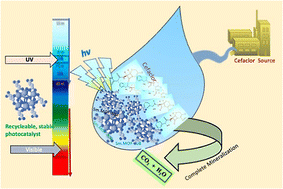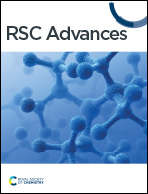Fabrication of samarium doped MOF-808 as an efficient photocatalyst for the removal of the drug cefaclor from water
Abstract
MOFs are emerging photocatalysts designed by tuning organic ligands and metal centers for optimal efficiency. In this study, a samarium decorated MOF-808(Ce) metal organic framework was fabricated by facile hydrothermal synthesis. The synthesized samarium decorated MOF-808(Ce) was characterized by using analytical techniques such as SEM, EDX, XRD and TGA to study its morphological, thermal and structural properties. SEM images showed that MOF-808(Ce) comprised of truncated octahedrons. The morphology of the material was changed upon Sm incorporation. Sm/MOF-808(Ce) exhibited better UV-vis light absorption properties than MOF-808(Ce) as evidenced by its slightly higher band gap value. This material was exploited for the degradation of the drug cefaclor from water. Cefaclor removal followed double a first order in parallel model (DFOP). Under UV light, 97.7% of the cefaclor was removed in only 20 minutes and after 60 minutes this removal efficiency was increased to 99.25%. These features exhibited that samarium decorated MOF has immense potential for the photocatalytic degradation of cefaclor as it generates e− and h+ to enhance the photocatalytic efficiency and it is a promising candidate to treat wastewater without formation of harmful byproducts.



 Please wait while we load your content...
Please wait while we load your content...